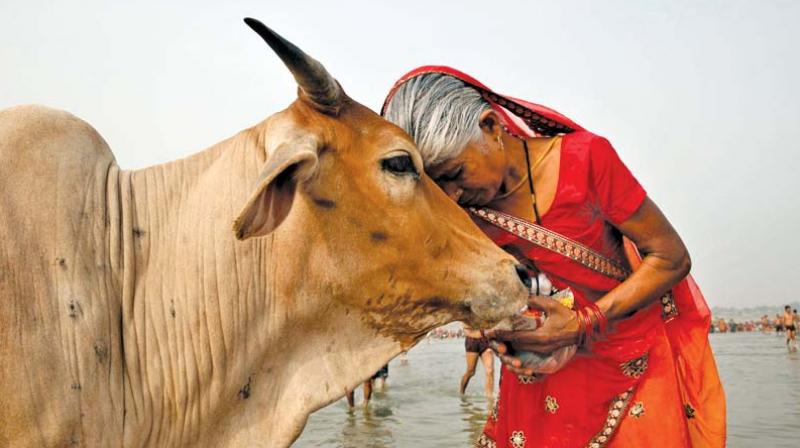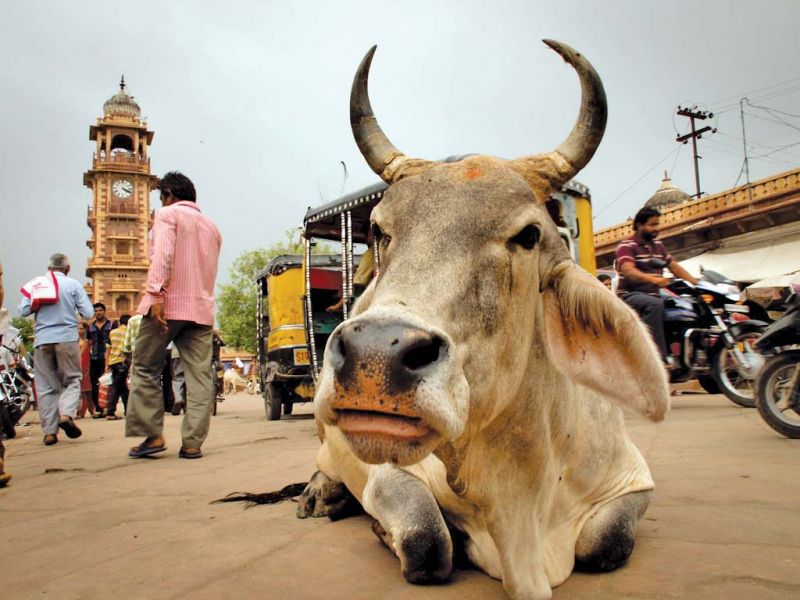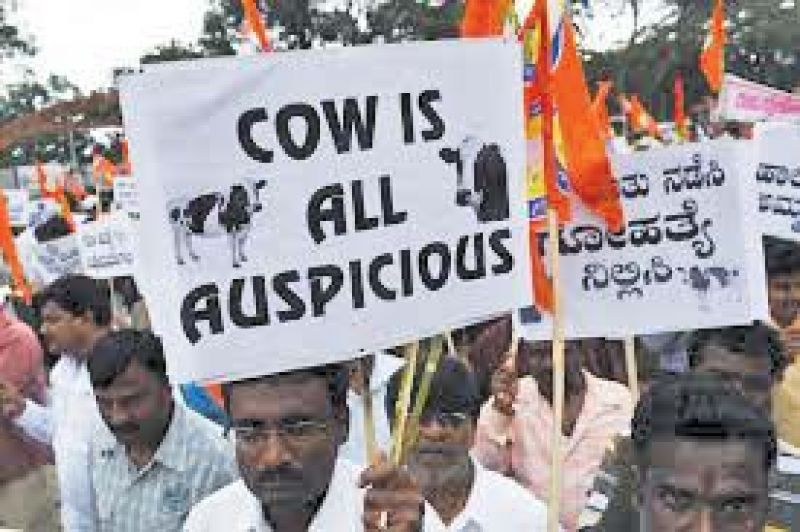Modi and the Bovine Republic

The recent lynchings in the country, and the subsequent lack of strong follow-up measures by the Narendra Modi government, has taken the sheen off Brand Modi. More than the Bharatiya Janata Party’s (BJP) appeal, it is ‘Brand Modi’ which is at play in the country and abroad.
Mark Twain wrote about India, saying, “It is a curious people. With them, all life seems to be sacred except human life.” Though written more than a century back, it has come back to haunt India. Cow vigilantism and mob lynchings by the so-called “gau-rakshaks” is creating a poor image of India abroad and at home in general, and of Prime Minister Narendra Modi, in particular. Mr Modi has come down against cow vigilantism and the subsequent lynchings, mainly of Muslims and Dalits in the name of protecting cows.
He, very convincingly told the all party meeting before the start of the monsoon session of Parliament, that the state government should take “stringent action against those who are violating the law in the name of cow protection.” At the same time, he also stressed that many Hindus believe the cow is like their mother, but it should not let people take the law into their own hands. Mr Modi stopped short of unequivocally condemning the lynchings. At best, it can be said that he disapproved of such acts, and as it appears, did not condemn the act. What is the politics and optics behind such a statement? What about the image that is being conveyed of PM Modi in India and abroad?
Examining lynching in American history, Jesse Carr observes, “American histories of lynching indicate it has been a form of state sanctioned violence rather than a result of lawlessness.” This has been arguably true for the anti-Sikh riots of 1984, the Gujarat riots and the recent lynching of “beef eaters” and cattle traders, too. Interestingly, most of these lynching have been rejected by BJP leaders and TV commentators as a law and order problem, or ineffective law enforcement or “hurt feelings of the Hindus,” and least as a socio-political problem.
The NDA led by Mr Modi came to power through absolute majority in the Lok Sabha in 2014, with an agenda of a corruption-free government and a development agenda with an egalitarian slogan of “Sabka Saath Sabka Vikas.” The subtext of BJP's victory was also on a belief that the Congress has practiced a policy of Muslim “appeasement”, which was juxtaposed with the eating and lifestyle habits of Muslims, which included the eating of beef, an anathema for North Indian Hindus. Campaigning during the UP Assembly elections. The PM had talked about the “pink revolution”, that has been overtaking the country. This possibly has acted as a cue to the right radicals that they can get away with such acts of violence on “beef eaters” and suppliers.
The Brand Modi, who spoke about bullet trains, sent 104 satellites in one go, demonetised Rs 1,000 and Rs 500 notes, implemented GST, which helped him gain status as one of the most powerful leaders of the world, has started taking a beating lately.
Mr Modi’s impression as a mature statesman, who people believe can make a difference to their lives, something that they have not seen or has never been done before during Congress, and briefly during the opposition’s rule over the years. He has tapped into the despair and the hopelessness of the people, which gave him a larger-than-life image that also helped BJP as a political party to cut into the ideological narrative of Congress’ centrism that has been built up over the years.
Some of his off-the-cuff comments, such as on former PM Manmohan Singh taking a bath with his raincoat on during UPA rule, or of the “pink revolution” and the 56-inch chest etc, should also be seen in this light. He cannot be seen as a person who only talks but is unable to do anything on the ground. Brand Modi has been carefully developed over the past three years, or even before that. This brand came to power to make a difference in the lives of the people, and people still have faith in that brand. India is a country, which has more than 65 per cent of its population below 35 years of age, and he has been able to relate with that age group.
This population group is still looking for answers to its questions with regard to the hard times it faced during the demonetisation period and the temporary rise in taxes on account of GST implementation.
It is still looking for answers as to how much money was collected during demonetisation, how much of it was fake and black and how much of a difference demonetisation and digital transactions have made to the nation? These and many other questions still haunt them.
India’s lynch mob
- September 28, 2015: In UP’s Dadri, Mohammad Akhlaq was beaten to death over rumours that his family was storing and consuming beef
- October 2015: A 20-year-old was killed in Sirmaur, Himachal Pradesh, by villagers, who accused him of smuggling cattle
- July 11, 2016: In Una, Gujarat, seven members of the Dalit community were thrashed by gau rakshaks for skinning a cow
- August 1, 2017: In Alwar, Rajasthan, a farmer Pehlu Khan was beaten to death by a mob while he was transporting cows
- June 22, 2017: 10 to 12 men stabbed Junaid khan and his two brothers on suspicion of carrying beef on a train. Junaid succumbed to his injuries.
— source: IndiaSpend
- Clashing over gau mata
- 20 attacks were reported in 2017
- 63 violence cases reported since 2010
- 32 cow-related violence cases took place in BJP-ruled states
- 28 Indians died, 124 were injured over cow violence since 2010
- 13 of 63 cases were reported from southern and eastern states
- Uttar Pradesh reported the highest number of cases — 10
— source: indiaspend



